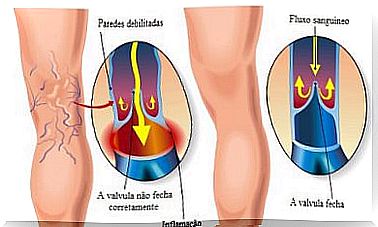What Is Methylmalonic Acidemia?

Methylmalonic acidemia is a congenital anomaly that affects vitamin B12 metabolism. The body cannot break down certain proteins and fats, resulting in the accumulation of methylmalonic acid in the blood.
The disease is usually diagnosed in the first year of life. Approximately 1 in 25,000 to 48,000 babies are born with this problem. Furthermore, symptoms are evident during childhood and vary from person to person.
Causes of methylmalonic acidemia

The cause of vitamin B12-sensitive methylmalonic acidemia is a defect in the synthesis of the adenosyl-cobalamin cofactor (AdoCbl) due to genetic alterations in the MMAA (4q31.1-2), MMAB (12q24.1) and MMADHC (2q23.2) genes .
Vitamin B12-resistant methylmalonic acidemia is caused by a complete or partial deficit in the activity of the mitochondrial enzyme methylmalonyl-Coa mutase. However, in this case, the mutations are in the MUT gene (6p21).
However, all methylmalonic acidemias are transmitted following an autosomal recessive pattern of inheritance.
Symptoms
Signs and symptoms of methylmalonic acidemia can include vomiting, dehydration, hypotonia, developmental delay, fatigue, and hepatomegaly. On the other hand, in the long term, complications may appear, including:
- Power problems.
- Intellectual disability.
- Chronic kidney disease.
- Pancreatitis or inflammation of the pancreas.
If affected people do not receive treatment, they can go into a coma or even die. Furthermore, those affected with isolated methylmalonic acidemia may present the following symptoms depending on the form of the disease:
child shape
It is the vitamin B12-resistant enzyme subtype, and is the most common form of isolated methylmalonic acidemia. Presents itself during childhood. Children are normal at birth, however, they quickly manifest symptoms such as lethargy, vomiting and dehydration.
Then, increase in liver size, hypotonia, and encephalopathy become evident. At the level of analysis in the laboratory, the following parameters are measured:
- Ketosis and Ketonuria.
- Ammonia in the blood.
- Severe metabolic acidosis.
- Increased blood glycine.
partially deficient form
It is the form sensitive to vitamin B12 and presents itself in the first months or years of life. Affected children may have feeding problems such as anorexia, vomiting, hypotonia and developmental delay.
In some cases, after ingesting protein, vomiting may occur. Children affected by this form of acidemia are at risk of metabolic decompensation, which is why it is very important to diagnose and start treatment as soon as possible.
In general, until the first episode of vomiting, dehydration, lethargy or coma does not occur, it is not known that the person suffers from this metabolic alteration.
Benign form or adult form
Affected people are considered to be stable but may be prone to acute metabolic decompensation. The cause of this type of methylmalonic acidemia has not been fully established.
Treatment of methylmalonic acidemia

Treatment should be started immediately after diagnosis. The faster the treatment starts, the better the patient’s evolution will be.
Today, diet is the mainstay of treatment. Dietary treatment aims to prevent the accumulation of substrates and metabolites associated with toxic levels.
The recommended treatments for children are, for example:
- L-carnitine: this substance, in addition to being safe and natural, helps the body produce energy and eliminate waste.
- Oral antibiotics: These drugs can help reduce the amount of methylmalonic acid in the intestine.
- Vitamin B12 Injections: More than 90% of cases with CblA deficiency respond to this treatment. In addition, it helps 40% of children with CblB disabilities.
If there are symptoms of a metabolic crisis, a hospital should be sought. In short, hospital treatment includes intravenous bicarbonate to reduce blood acidity.
In addition, glucose is often administered intravenously to prevent the breakdown of protein and stored fat in the body.
Prevention of methylmalonic acidemia
Also, people suffering from this disease should avoid contact with people suffering from contagious diseases such as colds or flu to avoid complications.









